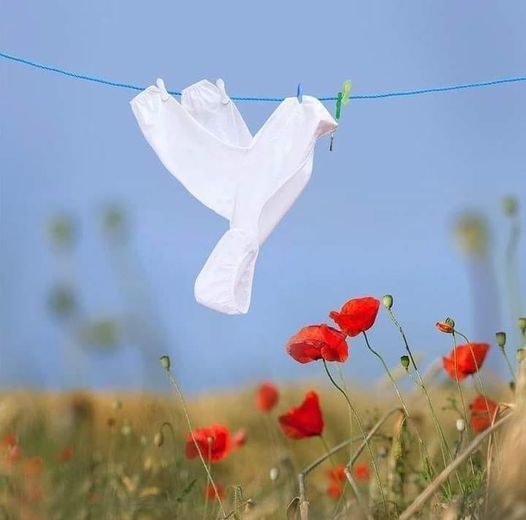#la colombe
Explore tagged Tumblr posts
Text
Item #50 – La Colombe Keep Cup
Hey, it’s Item #50! We’re halfway there! Maybe I should do a recap next?



I have too much drinkware. At one point, I was borderline obsessed with La Colombe coffee. I still like it, but I don’t feel the same attachment anymore. Back then, I’d tack on branded travel mugs, diner mugs, and other random swag to every coffee order. The amount of money I spent on unnecessary extras? Embarrassing. Brand loyalty like that makes me cringe now. Preferences are fine—I liked their coffee a lot—but spending extra cash to advertise for them? Not my proudest moment.
This particular cup is a KeepCup branded with the La Colombe logo. When I first got it in 2019, I liked it—it felt sleek and functional. But I need to be real with myself: I didn’t need it then (I just wanted it), and I definitely don’t need it now. That’s not the real issue, though.
Here’s the problem: it smells. No amount of scrubbing, soaking, or cleaning has fixed it. I’ve tried vinegar, baking soda, dish soap—everything. The lid holds onto the odor no matter what I do, and even the glass has a faint smell, which is baffling because glass usually doesn’t retain odors. Maybe there’s bacteria stuck in the ridges? Whatever the reason, nothing works. I’ve spent too much time trying to “fix” it, and it’s just not worth it anymore.
Oddly, the rubber sleeve is fine—no smell at all. For a brief moment, I thought about ordering a replacement cup and lid directly from KeepCup so I could keep using the La Colombe sleeve. But…why? I already have more than enough travel mugs. I don’t need to throw more money at this, especially since the cup didn’t even keep my coffee hot for very long.
And yet… I’m irrational. I’ve tossed the lid, recycled the glass, but I’m still holding onto that rubber sleeve. Maybe it’ll fit on a different cup I already own? I know it’s silly, but let me have this one. This project exists because I can be irrational sometimes.
Verdict: This was a fail. I spent $34 on a travel mug I didn’t need, and it ended up stinky and unusable. But at least I’ve parted with most of it—just not the sleeve (yet).
Advice to Myself / Lessons I Need to Learn:
Brand loyalty is silly. Just because I love a company doesn’t mean I need to buy their branded swag.
Nobody cares about the “lifestyle” I’m imagining. No one is impressed by me strolling down a city street with a fancy branded cup.
Stop paying money to advertise for companies. If it’s free, great. But spending $34 on an overpriced cup? Nope.
I already have travel mugs I like better. Remember this next time I’m tempted to buy another one.
In the end, this was an overhyped purchase that turned into a stinky waste of money. Time to let it go and move on.
#getting rid of 100 things#declutter#kitchen supplies#recycle#la colombe#why do i have feelings over trash#excessexorcism
1 note
·
View note
Text

la colombe, pablo picasso 1949
1 note
·
View note
Text
La Colombe adds Fifth Location at Philadelphia International Airport
Founded-in-Philly coffee phenom La Colombe has opened its fifth location at Philadelphia International Airport, in Terminal F. La Colombe at Terminal F in Philadelphia International Airport La Colombe’s rise to success began in 1994, when the coffee empire was started by Todd Carmichael and Jean Philippe Iberti in Philly’s Rittenhouse Square neighborhood. The once-local roastery has since…

View On WordPress
1 note
·
View note
Text

i was wrong it's a strawberry mocha. was pretty tasty
starting my morning off with a dark chocolate+strawberry latte, a spliff, and the gym. i guess i dont even like sleeping like i used to
#munchies#canned coffee#la colombe#canned latte#my morning#i run a gas station and have to take lots of product pictures#get off my nuts
3 notes
·
View notes
Text

the dove : symbol of peace, freedom and love
“I will remember, Your Grace,” said Sansa, though she had always heard that love was a surer route to the people's loyalty than fear. If I am ever a queen, I'll make them love me
&
Petyr cut a pomegranate in two with his dagger, offering half to Sansa. “You should try and eat, my lady.”
“Thank you, my lord.” Pomegranate seeds were so messy ; Sansa chose a pear instead, and took a small delicate bite
Sansa Week 2024 : day one - little dove
#sansa stark#source: a clash of kings#source: a storm of swords#source: la jeune fille à la colombe par jean-baptiste greuze#sansaweek2024
74 notes
·
View notes
Text


Jean-Michel Folon, in Saint-Paul-de-Vence. He made a poster for the famous restaurant "La Colombe d’Or", a meeting place for artists.
📸 by Alain Cinquini
7 notes
·
View notes
Text

Un soir à Paris : une colombe de la paix un peu défraîchie, malade tout comme son rameau d’olivier. C’est l’image de la paix dans le monde. 🕊️☮️
3 notes
·
View notes
Text







En l'honneur du Nouvel An Chinois qui nous fait passer dans l'Année du Serpent, en voici quelques-uns !
Ici, le Serpent d'Adam et Eve, dans des bâtiments romans, parfois gothiques ou byzantins :
Le Mans, cathédrale Saint-Julien
Canaries, Gran Canaria, Las Palmas - Maison de Christophe Colomb
Lavaudieu (Auvergne)
Saint-Gaudens (Comminges) collégiale
idem
Monreale (Sicile) - Cathédrale
Palermo (Sicile), Palazzo dei Normanni - chapelle palatine
#serpent#année du serpent#nouvel an chinois#médiéval#art roman#art gothique#byzantin#arabo-normand#le mans#vitraux#adam et ève#espagne#gran canaria#las palmas#christophe colomb#saint-gaudens#comminges#italie#sicile#monreale#palerme#palermo#palazzo#palazzo dei normanni#palais des normands#lavaudieu#auvergne#sarthe
4 notes
·
View notes
Text

Rituel du deuil, nous sommes dans une phase transitoire
8 notes
·
View notes
Text

Château Guillaume, Loire Valley region of France
French vintage postcard, mailed in 1910 to La Garenne-Colombes
#loire#chteau#historic#region#photography#postal#ansichtskarte#photo#sepia#la garenne-colombes#garenne#vintage#loire valley#postcard#france#valley#1910#briefkaart#mailed#postkarte#tarjeta#carte postale#ephemera#château guillaume#colombes#guillaume#postkaart#french
2 notes
·
View notes
Text

© Banksy - Dove of Peace
8 notes
·
View notes
Text
“El tipo puede cambiar de todo. De cara, de casa, de familia, de novia, de religión, de Dios. Pero hay una cosa que no puede cambiar Benjamín. No puede cambiar de pasión"
#el secreto de sus ojos#quote#feliz cumpleaños peñarol#me encanta que haya mas fuegos artificiales por el cumpleaños de un equipo de futbol que en navidad#inserte sticker del meme del gordo de la colombes
3 notes
·
View notes
Text
Lectures d'octobre 2024 : le BILAN de mes lectures automnales
Voilà ! On y est : les feuilles tombent toutes d’or métamorphosées, les branches des arbres sont dénudées, le brouillard obscurcit l’horizon, le plaid est tiré… et moi… je suis calfeutrée dans mon canapé, un livre entre les mains. J’ai lu neuf livres : – des romans contemporains,– des romans historiques (Et oui, la 2ème guerre mondiale n’est jamais loin de mes thèmes de prédilection), – un roman…

View On WordPress
#Bandes Dessinées#Bellevigne#Braud#COLLETTE#coup de coeur#HALL KELLY#Historiques#Jenner#L&039;appel des colombes#La Chiale#la librairie de Bloomsbury#Là où volent les papillons#Les notes rouges#Madeleine avant l&039;aube#Nakhle#Pavlenko#Redfearn#Romances société et les autres#Sept jours en Ecosse#Un si petit oiseau
0 notes
Text

“And the sea will bring man reasons to hope… as the night brings its procession of dreams.” That’s from… Christopher Columbus. Welcome to the New World, sir.
In pursuit of Red October, Marko Ramius and Jack Ryan.
#A la poursuite d’Octobre Rouge#Marko Ramius#Jack Ryan#Christophe Colomb#Bienvenue dans le Nouveau Monde#Movie#Film#Sean Connery#Culte#red october
1 note
·
View note

